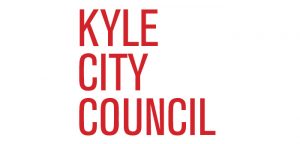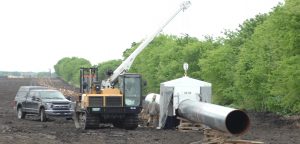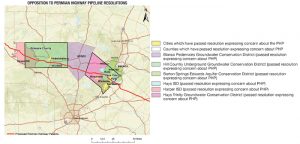Opponents of Kinder Morgan’s routing of its Permian Highway Pipeline (PHP) have put two federal agencies on notice – either comply with existing federal law or face legal action.
In one of the latest challenges to the 435-mile, 42-inch natural gas pipeline, which is planned to cross the recharge zone of the Edwards Aquifer, the focus has turned to the Endangered Species Act (ESA). Last month, the T.R.E.A.D. Coalition (Texas Real Estate Advocacy & Defense Coalition), along with the...
Opponents of Kinder Morgan’s routing of its Permian Highway Pipeline (PHP) have put two federal agencies on notice – either comply with existing federal law or face legal action.
In one of the latest challenges to the 435-mile, 42-inch natural gas pipeline, which is planned to cross the recharge zone of the Edwards Aquifer, the focus has turned to the Endangered Species Act (ESA). Last month, the T.R.E.A.D. Coalition (Texas Real Estate Advocacy & Defense Coalition), along with the cities of Kyle, San Marcos and Austin, the Barton Springs Edwards Aquifer
Conservation District (BSEACD) and the Wimberley Valley Watershed Association (WVWA) filed a notice of intent to sue.
That’s a requirement under the ESA, T.R.E.A.D. attorney David Braun said. The notice, filed in mid-October, allows the U.S. Army Corps of Engineers (USACE) and the Fish and Wildlife Service (USFWS) 60 days to respond and take action. “They can’t just be thinking about doing something — they have to take a final action before we can sue. The lawsuit won’t be filed until they issue the permits using what we think is improper procedure.”
The PHP would transport 2.1 billion cubic feet of natural gas daily from the oil fields of West Texas to near Houston, with the majority of what it carries intended for export. Its route takes it within a mile of Jacob’s Well and crosses the Blanco River twice, in addition to perhaps hundreds of small streams and numerous watersheds. Because the project is classified as a common carrier, Kinder Morgan has the power of eminent domain to acquire easements along the proposed route.
And because it is an intrastate project, the main regulatory agency is the Texas Railroad Commission (RRC) but, Braun explained, the ESA and its habitat conservation requirements still apply.
In essence, Kinder Morgan is attempting to secure a blanket permit though the USACE to cover every stream it crosses; however, T.R.E.A.D. and the other entities believe an individual permit for each stream is necessary.
“Kinder Morgan is proposing to cross dozens of streams and rivers regulated by USACE under the Clean Water Act and they are also affecting endangered species over hundreds of miles of that pipeline that don’t have anything to do with the stream crossing.”
At risk are terrestrial species like the golden-cheeked warbler and other migratory songbirds as well as aquatic species like the Texas Blind Salamander and Barton Springs Salamander. Typically when songbirds are involved, mitigation involves preserving areas of habitat to replace those destroyed. However, the issue surrounding aquatic species is murkier.
“We don’t know the answer” to mitigating aquatic habitat, Braun said. “But that is USFWS’s job and I think everybody should be asking that question.”
The pipeline’s route through Central Texas will encounter many karst features — essentially entries to the aquifers — a study performed by the city of Austin notes. “Given the proposed location of the PHP, it is highly likely the trench will intersect fissures and voids, potentially altering flow pathways within the aquifers and creating pathways for contaminants to spread along underground conduits,” the study said.
Dye tests have confirmed flow paths from areas like the Wimberley Bat Cave and Raccoon Cave to both San Marcos Springs and Barton Springs, a study by Zara Environmental found.
Braun said there are three main ways the PHP could impact endangered species. “First, just the construction project itself could upset karst features on the aquifer. They’ve got billions of tons of dirt moving going on over the recharge zone. If a Hurricane Harvey-type event came down it could threaten the species. Two, there are always hydrocarbons in the pipeline that are liquid
… Kinder Morgan stress that it’s in their interest to keep that gas dry and to keep that condensate out of the pipeline, but they can’t keep it all out and sometime there’s quite a bit. If there is a break and there’s condensate, there could be an impact. The third possibility is if they switch from natural gas to something else, which Kinder Morgan has promised they won’t do, but there’s nothing legally binding.” Braun said that likely includes the settlement agreement the company signed with the city of Kyle.
At the heart of Kinder Morgan’s strategy is using a new Trump administration policy that allows federal agencies to consult and coordinate in responding to permit applications. That’s intended, he said, to streamline the process and create “one stop shopping.”
“That’s a very legitimate and useful rule to limit bureaucracy, but it’s intended to work when there’s a project that’s in one place and has one purpose. It’s not intended in a case like this pipeline, 435 miles long and affecting many national interests regulated by different agencies.”
The problem with that process, called Section 7, “is that when you go through Section 7 you don’t have to do an Environmental Impact Statement for the whole project … the procedure they are following is in our opinion a blatant attempt to avoid a National Environmental Policy Act (NEPA) review, which is the only federal requirement that would allow us to have transparent public inspection of the project as a whole, its impact on the environment both human and natural, and to have public comment. They should not be able to do all that in private behind closed doors.”
Braun said if the federal agencies “agree with us that there is potential for harm to the aquifer species, then not only does Kinder Morgan have to consider mitigation, they have to consider alternatives and that’s really the point. There are alternatives to this route crossing this aquifer. There’s no reason they have to do this other than expediency and profit.” He added that if the project were re-routed around the aquifer, threats to the species would be completely eliminated.
Soon after the notice of intent was filed, Kinder Morgan Vice President for Public Affairs Allen Fore said that the compay “looks forward” to continuing to work with the stakeholders as the project moves forward.
Not long after the notice of intent was filed, Kinder Morgan reported the project had been delayed due in part to regulatory issues.













